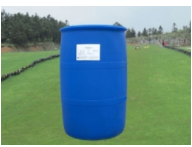Surfactants are substances that can significantly reduce the surface tension and interfacial tension of liquids. Their molecules are composed of polar hydrophilic group and nonpolar hydrophobic group. The common hydrophilic group is carboxyl group, sulfuric acid ester, sulfonic acid group, amino group, quaternary ammonium group and hydroxyl group, while the hydrophobic group is represented by long-chain alkane and aromatic hydrocarbon. Because of their hydrophilic and lipophilic amphiphilic properties, they can change the surface properties of cleaning solution during chemical cleaning, making it have lower surface tension, better wettability and foaming. According to the different charge of the surface active part, surfactants can be divided into four categories: anionic, cationic, non-ionic and amphoteric.
The main cleaning agent, corrosion inhibitor and surfactant are the three components of chemical cleaning solution. The special chemical structure of surfactant determines that the surface tension of the solution will be greatly reduced and the wetting power of the solution will be improved after the surfactant is dissolved in the liquid solution. Especially when the concentration of surfactant in the solution reaches the critical CMC concentration, the surface tension, osmotic pressure, viscosity and optical properties of the solution have significant changes. Surfactant in the chemical cleaning process of wetting, penetration, dispersion, emulsification, solubilization plays a multiplier effect. Generally speaking, there are two main functions of surfactants in chemical cleaning, one is to improve the apparent concentration of insoluble organic pollutants by the dissolution of micelles, that is, solubilization; the other is to reduce the interfacial tension due to the amphiphilic groups of surfactants which can be adsorbed or enriched on the interface between oil phase and water phase.

In the process of industrial production, various kinds of dirt will be produced in the equipment and pipeline of the production process, such as coking, oil dirt, scale, sediment, corrosive dirt, etc., which usually lead to equipment and pipeline failure, decrease of production efficiency of the device system, increase of energy consumption, etc., and even safety accidents. In recent years, with the rapid development of new synthetic industry, new types of industrial fouling are emerging, and its molecular structure composition is becoming more and more complex. In addition, the bonding mechanism and bonding form between industrial fouling and different washing objects are often determined by the type of fouling, the structural composition and surface physicochemical properties of the cleaned objects. For the needs of environmental protection, the requirements of biodegradability and innocuity of chemical agents are increasing day by day. Therefore, new challenges are put forward to chemical cleaning technology.
Chemical cleaning is a comprehensive technology, involving the research on the formation and performance of dirt, the selection and preparation of cleaning agents and additives, the selection of corrosion inhibitors, cleaning process technology, the development and utilization of cleaning equipment, cleaning process detection technology and waste water treatment, etc. Among them, the choice of cleaning agent is the key to determine the success or failure of cleaning work, which directly affects the cleaning effect, scale removal rate, corrosion rate and economic benefits of the equipment.
Cleaning agent mainly consists of cleaning agent, corrosion inhibitor and surfactant. Surfactant has the functions of adsorption, permeation, emulsification, dissolution and washing in chemical cleaning because of its hydrophilic and hydrophobic part in molecular structure. It can not only be used as auxiliary agent in chemical cleaning, but also as main component, especially in the cleaning process of acid pickling, alkali cleaning, corrosion inhibition, oil removal and killing The greater the effect.